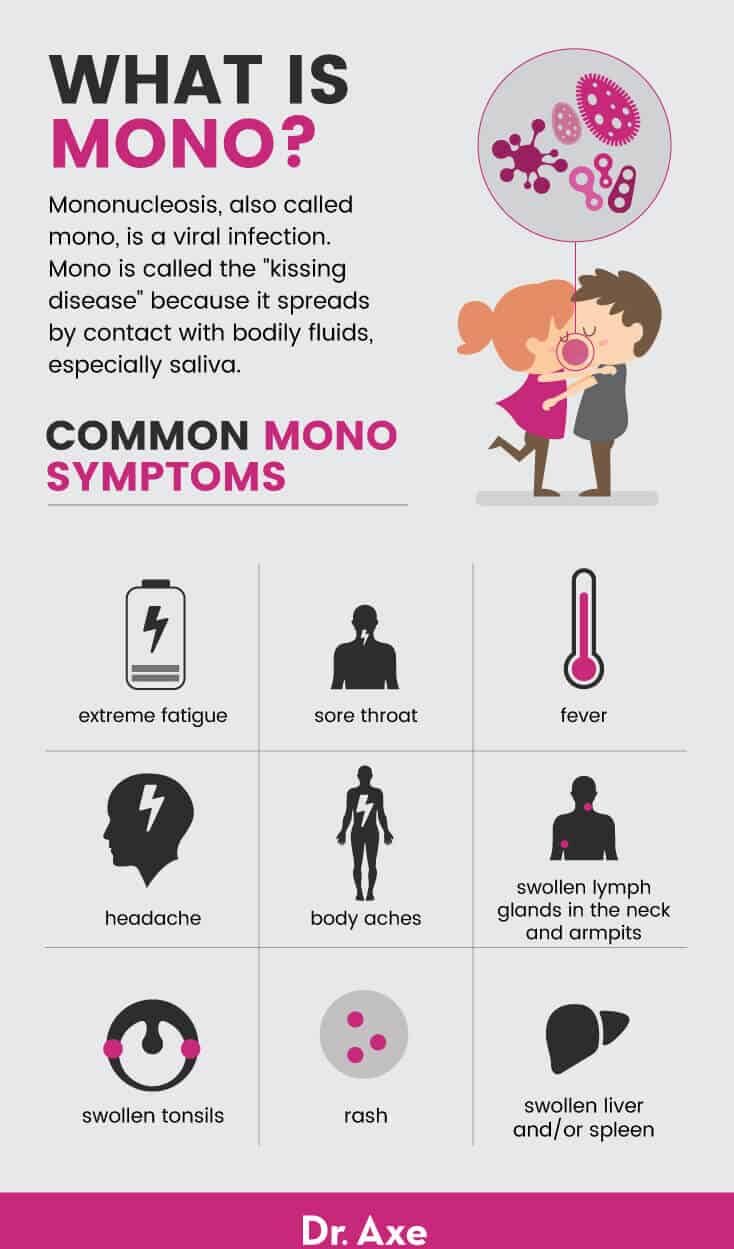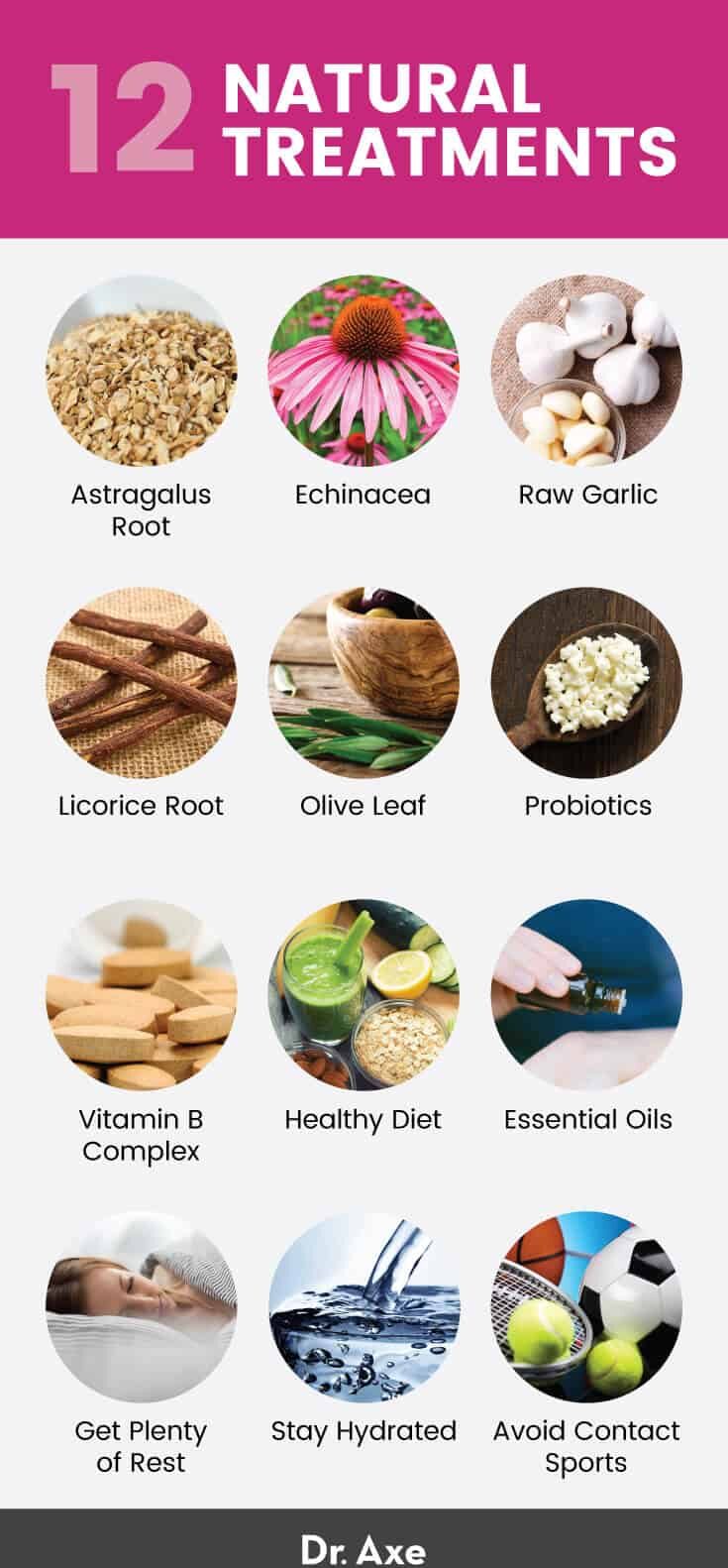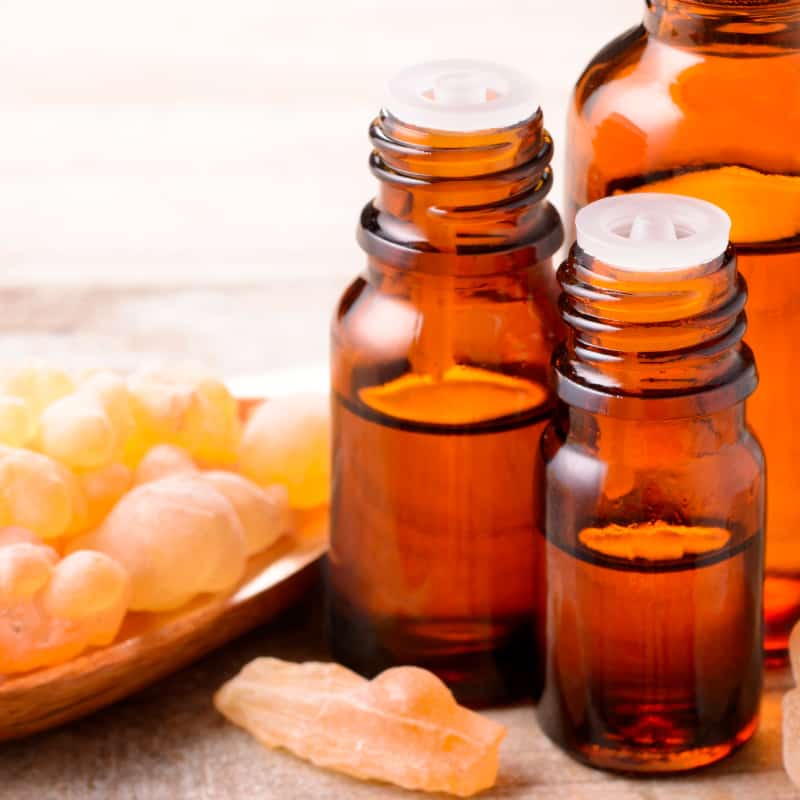This Dr. Axe content is medically reviewed or fact checked to ensure factually accurate information.
With strict editorial sourcing guidelines, we only link to academic research institutions, reputable media sites and, when research is available, medically peer-reviewed studies. Note that the numbers in parentheses (1, 2, etc.) are clickable links to these studies.
The information in our articles is NOT intended to replace a one-on-one relationship with a qualified health care professional and is not intended as medical advice.
This article is based on scientific evidence, written by experts and fact checked by our trained editorial staff. Note that the numbers in parentheses (1, 2, etc.) are clickable links to medically peer-reviewed studies.
Our team includes licensed nutritionists and dietitians, certified health education specialists, as well as certified strength and conditioning specialists, personal trainers and corrective exercise specialists. Our team aims to be not only thorough with its research, but also objective and unbiased.
The information in our articles is NOT intended to replace a one-on-one relationship with a qualified health care professional and is not intended as medical advice.
How to Recognize Mono Symptoms + 12 Natural Treatments
February 1, 2024

Mono is called the “kissing disease” because it spreads by contact with bodily fluids, especially saliva. Mono symptoms are most common in teens and young adults. Symptoms in children are usually too mild to notice, and older adults typically have immunity to the virus.
But when you do have active mono, you’ll know something’s wrong. The most common symptom of mono is extreme fatigue that can last for weeks. Luckily, natural treatments like antiviral herbs, anti-inflammatory foods and essential oils can help you to get through the discomfort.
Mono Symptoms
Mononucleosis, also called mono, is a viral infection that causes extreme fatigue, high fever and swollen lymph nodes. Mono symptoms usually appear four to six weeks after infection. This incubation period may be shorter in young children.
Common mono symptoms include:
- extreme fatigue
- sore throat
- fever
- headache
- body aches
- swollen lymph glands in the neck and armpits
- swollen tonsils
- rash
- swollen liver and/or spleen
Three typical mono symptoms include sore throat, onset of fever, and enlarged and painful lymph glands in the neck. However, the more unique clinical feature of mono, which helps doctors to distinguish it from other viral and bacterial throat infections, is a severe and debilitating fatigue that accompanies these symptoms and may last for months after they have resolved.
Most people have uncomplicated mono that goes away on its own within a few weeks. However, some develop complications, including upper airway obstruction, chronic fatigue syndrome, neurologic disease, severe hematologic cytopenias (a reduction in the number of blood cells), hepatitis and rupture of the spleen.
According to research published in the Yale Journal of Biology and Medicine, spontaneous rupture of the spleen is a rare complication of infectious mononucleosis. It occurs in 0.1 percent to 0.5 percent of patients.
The spleen is vulnerable to ruptures within the first four to six weeks of mono symptoms. Some symptoms of an enlarged spleen include pain and tenderness around the spleen, on the upper left side of the abdomen; indigestion and feeling uncomfortable when eating; and pain when taking deep breaths or moving around.

Causes and Risk Factors of Mononucleosis
Epstein-Barr virus (EBV) is the most common cause of infectious mono symptoms, but other viruses can also cause this condition. EBV (also known as human herpesvirus 4) is one of eight viruses in the herpes family, and it’s one of the most common viruses in humans. The virus occurs all over the world.
Most people are infected with it at some point in their lives. Researchers suggest that EBV and other viruses of the herpes family have co-evolved with their hosts over millions of years. During this time, they have developed sophisticated strategies to help their survival and ability to spread.
According to research published in Clinical & Translational Immunology, EBV infects at least 90 percent of the population worldwide, the majority of whom have no recognizable illness. EBV infections in children usually do not cause mono symptoms, or they are so mild that they resemble the symptoms of brief, childhood illnesses. But in 50 percent of adolescents, EBV infection causes infectious mononucleosis.
Research conducted at the University of Georgia suggests that mono is most commonly present in patients aged 5 to 25 years, especially those aged 16 to 20 years. Approximately one in 13 patients in this group who complains of a sore throat has mono.
EBV infection among adolescents and young adults spreads primarily by deep kissing, according to researchers. It has also been suggested that sexual intercourse enhances transmission.
How preadolescent children contract EBV is unknown. Some studies suggest that they are infected by their parents or siblings who shed EBV periodically into their oral secretions.
How Contagious or Infectious Is Mono?
The virus that causes mono typically spreads through bodily fluids, especially saliva. However, mono can also spread through blood and semen during sexual contact, blood transfusions, and organ transplantations.
Most adults have been exposed to the Epstein-Barr virus. They build up antibodies and become immune, so they won’t get mono again.
Although mono symptoms go away, the infected person will always carry the virus that caused it. Once the virus is in your body, it stays there in an inactive state.
It may become active again without causing any symptoms. This is when you can spread the virus to others, no matter how much time has passed since the initial infection, without even realizing it.
If you know that you have active mono, avoid passing it to others by refraining from close contact until your mono symptoms have disappeared. Avoid kissing anyone and sharing things like drinking glasses, drinking straws, eating utensils, lip balm or toothbrushes. According to the Centers for Disease Control and Prevention, the virus probably survives on an object at least as long as the object remains moist.
If you kissed or shared a glass with someone who has active mono, that doesn’t mean you are definitely going to experience mono symptoms. However, the virus does spread through saliva and other bodily fluids. Your best bet is to be cautious when around someone with mono symptoms.
Because it takes a few weeks for symptoms to appear, a person with the virus can spread mono without knowing it. but anyone who has had the virus in the past will not develop symptoms again because the body has developed immunity. It is only people who have never had mono before who should be concerned about contracting the virus.
How Long Does Mono Last?
Most people with mono get better in two to four weeks, but mono symptoms such as fatigue, enlarged lymph nodes and a swollen spleen may last for several weeks. Sometimes, fatigue, muscle pain and need of sleep can last for six months or longer, even after the infection has resolved.
Just like other viruses in the herpes family, EBV can stick around in your body in a dormant state, causing no symptoms. It may reactivate at any time, especially in times of stress.
A 2010 study published in Clinical and Experimental Medicine found that there was a significant difference between the rates of EBV infection and reactivation among participants who had elevated epinephrine and cortisol levels, suggesting that increased stress hormones can cause the dormant virus to come back again.
Chronic active EBV infection is rare in all cases except for people with immune problems, such as HIV or transplant patients.
Conventional Treatment
There is no specific treatment for the virus that commonly causes mono. Some people turn to pain medications to relieve mono symptoms. Because the illness is caused by a virus, antibiotics are not effective.
Corticosteroids are often prescribed to treat inflammatory complications, such as airway obstruction or autoimmune phenomena. They are used to lessen swelling, redness and itching.
There are some issues with taking corticosteroids. They can lower your resistance to infection and make infections harder to treat, and some possible side effects from corticosteroid use include increased appetite, indigestion, nervousness and restlessness.
Over-the-counter pain medications are commonly taken to relieve some mono symptoms like headaches and body aches, but be aware that acetaminophen overdose is one of the most common poisonings worldwide. Adults should not take more than 4,000 milligrams of acetaminophen a day, and because many medications contain acetaminophen, you may take more than you realize if you use more than one type of medicine at a time.
Another thing to keep in mind when taking over-the-counter pain medications is that all painkillers interfere with normal functions of the nervous system, changing the ways that our nerves communicate feelings of pain when they occur in certain spots in the body. When taken to relieve pain associated with mono, which can last for weeks or even months, there’s a good chance that you’d end up taking too much, potentially leading to multiple side effects and even poisoning.
Some doctors may recommend antiviral agents, such as acyclovir and valacyclovir, for the treatment of mono symptoms, especially in cases of severe infectious mononucleosis. Approach these types of treatments with caution because of the potential risk for drug toxicity.
12 Natural Treatments For Mono
1. Astragalus Root
Astragalus is a major medicinal herb commonly used in many herbal formulations in traditional Chinese medicine to treat a wide variety of diseases and body disorders. It is a powerful immune-building plant that contains three extremely beneficial components: saponins, flavonoids and polysaccharides. These components are responsible for the antiviral, antimicrobial and anti-inflammatory capabilities of astragalus.
2. Echinacea
Many of echinacea’s chemical constituents are powerful immune system stimulators and can provide significant therapeutic value. Research shows that echinacea has antiviral effects and can be consumed to stop recurring infections. It also helps alleviate pain associated with headaches, sore throats and body aches.
3. Raw Garlic
Raw garlic has antimicrobial and antiviral properties, which is why it’s used to treat many infectious diseases. Eat one clove of raw garlic daily until your mono symptoms disappear. Bite into the clove to release the allicin, the most beneficial compound in garlic.
4. Licorice Root
Licorice root is a powerful antiviral herb due to its triterpenoid content. It has immunostimulating effects and works as a cough and sore throat remedy. It also helps to relieve pain, which is a common symptom of mononucleosis.
5. Olive Leaf
Olive leaf extract has the ability to treat dangerous viruses by destroying invading organisms and stopping viruses from replicating and causing an infection.
6. Probiotics
Probiotics help heal the gut and support the immune system. They can help reduce the risk of certain infectious diseases and enhance immune function. Research suggests that probiotics are able to decrease the risk or duration of respiratory infection symptoms, and they have antiviral mechanisms.

7. Vitamin B Complex
B vitamins help fight fatigue, boost energy, improve mood and boost cognitive function. Take a B vitamin complex supplement, or eat vitamin B6 and vitamin B12 foods, like wild salmon, raw cheese, raw milk, garlic, sweet potatoes and bananas.
8. Healthy Diet
When you are suffering from mono symptoms, boost your immune system and support your body with healthy, anti-inflammatory foods. An anti-inflammatory diet includes omega-3 foods and antioxidant foods, including green leafy vegetables, beets, blueberries, bone broth, walnuts and wild salmon.
For people with ongoing fatigue, adding magnesium-rich foods can be helpful. These foods include spinach, chard, pumpkin seeds, yogurt and kefir, almonds, black beans, avocados, figs, and bananas. Magnesium can help you overcome fatigue, improve your energy levels and support healthy nerve function.
Potassium-rich foods also help you balance your electrolytes. These foods include sweet potatoes, acorn squash, white beans and mushrooms.
9. Essential Oils
Essential oils can help you relieve mono symptoms such as sore throat, headache, body aches, fatigue and inflammation. One of the best essential oils for a sore throat is thyme oil. It is a strong antioxidant, and it has antimicrobial properties.
Oregano oil has antiviral effects, so it can be used to inhibit the spread of EBV. Eucalyptus oil can stimulate immunity and improve respiratory circulation. Lavender oil can help you beat stress so you can relax and get well.
10. Get Plenty of Rest
When you have mono, you need plenty of rest — your body will demand it. Don’t fight the fatigue.
Take naps throughout the day, and go to sleep early. Refrain from physical activity until you begin to feel well again.
It’s also important to reduce stress, so consider taking a warm bath, reading an uplifting and inspiring book, or engaging in the hobbies that you love, especially as you recover from mono.
11. Stay Hydrated
Staying hydrated is important because it helps remove toxins from the body to speed up the healing process.
Avoid sports drinks or fruit juice. They contain sugar and chemicals that cause inflammation in the body. This makes it more difficult to heal itself.
Drinking plain water, coconut water or herbal tea is ideal.
12. Avoid Contact Sports
Because the spleen may become enlarged with mono, it is wise to avoid contact sports until your mono symptoms have completely disappeared. According to research published in the Clinical Journal of Sports Medicine, it’s recommended that athletes resume contact sports after three weeks of illness as long as they have no ongoing signs or symptoms of an EBV infection.
Precautions
If you have severe pain in the upper left part of your abdomen, you may have ruptured an enlarged spleen and should seek medical attention immediately. This is most likely to happen because of a blow to the abdomen, and it’s rare under normal circumstances.
You should also seek medical attention if your tonsils become so swollen that you are having trouble breathing or swallowing.
Final Thoughts
- Mononucleosis, also called mono, is a viral infection that causes extreme fatigue, high fever and swollen lymph nodes.
- Epstein-Barr virus (EBV) is the most common cause of infectious mono symptoms, but other viruses can also cause this condition. EBV (also known an human herpesvirus 4) is one of eight viruses in the herpes family, and it’s one of the most common viruses in humans.
- Mono is most commonly present in patients aged 5 to 25 years, especially those aged 16 to 20 years.
- Most adults are already exposed to the Epstein-Barr virus. They build up antibodies and become immune, so they won’t get mono again.
- Most people with mono get better in two to four weeks, but mono symptoms such as fatigue, enlarged lymph nodes and a swollen spleen may last for several weeks.
- There is no treatment for EBV, but home remedies can help ease the discomfort of mono. These include antiviral herbs, essential oils, plenty of fluids, rest and a healthy diet.












